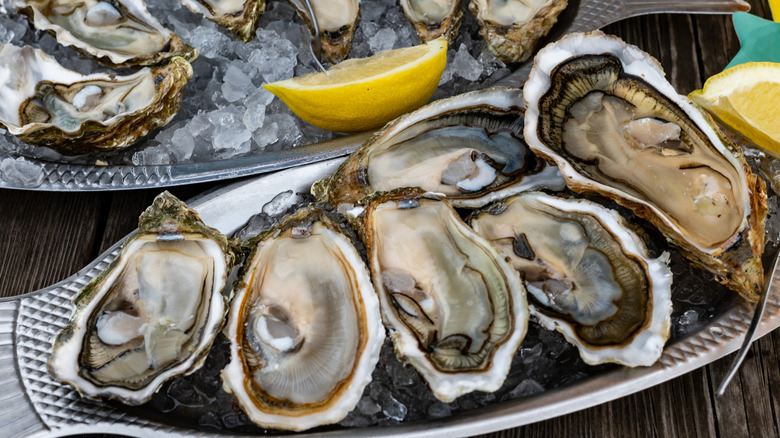Raw Oysters Contaminated With Flesh-Eating Bacteria Claimed 2 Lives In These States
Two restaurant-goers have died as a result of eating raw Louisiana oysters contaminated with Vibrio vulnificus, a flesh-eating bacterium. The cases occurred in two different states, Louisiana and Florida, and are two of several deaths resulting from the outbreak of the bacteria. While there are seafood restaurant red flags that all diners should keep an eye out for, it's impossible to know whether your food is harboring such a dangerous and potentially deadly organism.
Though the two restaurants haven't been named, the oysters responsible were harvested in Louisiana. There have been 22 total cases of people falling ill due to exposure to Vibrio vulnificus, and six deaths in the state of Louisiana at the time of this writing. Most hazardous exposure to the bacteria involves either eating oysters or going into warm coastal waters with an open wound. While symptoms are usually mild, they can range from a fever, rash, nausea, and dizziness to increasingly worse ailments like internal bleeding, sepsis, organ damage, and necrotizing fasciitis. Typically, the question of whether or not we should be eating raw oysters is an easy one to answer, but bacteria like Vibrio vulnificus may make some think twice.
Why Vibrio vulnificus is thriving
Vibrio vulnificus is called halophilic, meaning it needs salt to survive, but the level of salt in the open ocean is too high. This makes the warm, brackish coastal areas of Florida and Louisiana, where salt and freshwater mix, ideal places for it to live. However, from 1988 to 2018, cases involving the flesh-eating bacteria have increased by 800%. This extreme increase is likely due to factors related to climate change. The increasing global temperatures are causing glaciers to melt and sea levels to rise, and the chain reaction is sometimes difficult to see until it's causing a stark increase in hazardous bacteria.
When glaciers melt, they lower ocean salinity. This creates a more favorable environment for Vibrio vulnificus to live. While typically higher in number from May through October, the increased global temperature can also prevent the bacterium from being killed off in the wintertime, providing ample opportunity for them to multiply at an alarming rate. Everyone wants to steer clear of food-related illness while traveling or dining out in their hometown, but there's no telling if a hazard, such as flesh-eating bacteria with ideal growing conditions, can be eliminated as a risk from raw seafood entirely.

